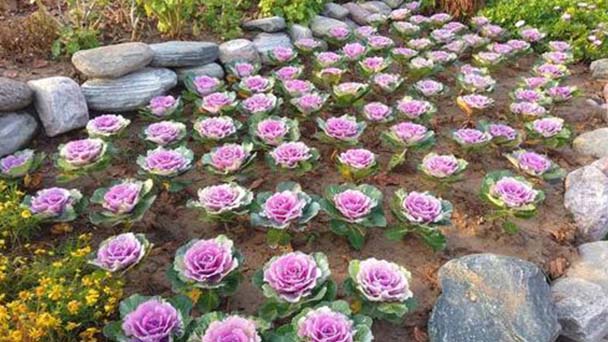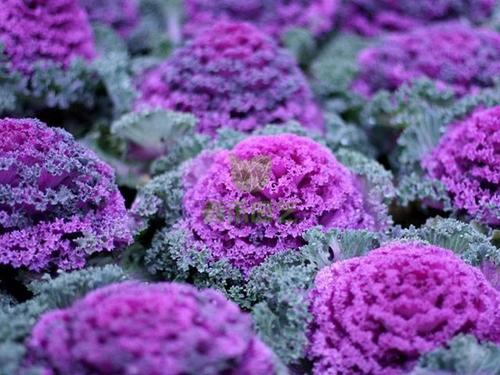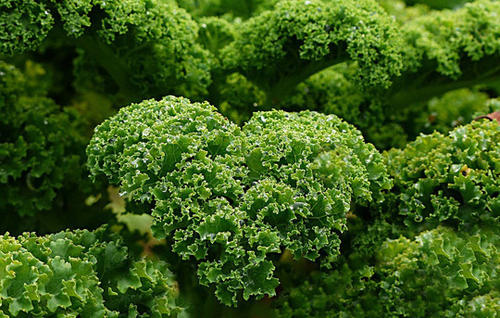How to propagate curly kale
Written by Maggie
Jan 27 2021

Sowing propagation is the main method of propagation for Curly Kale and occurs in summer. Now, how exactly does sowing propagation of Curly Kale blue work?

Curly kale sowing propagation time
Curly kale sowing propagation is usually done in summer, and early seeding can lead to yellowing of old leaves in the later stages of growth, making management more difficult and extending the management period. If the sowing propagation time is too late, it is easy to cause the leaf bush crown diameter can not reach the required specifications at the time of nursery.
Sowing propagation method of Curly kale
The sowing propagation method of Curly kale can be done in the open. Generally used as a point or bedplate seedling these two methods. In order to drain the water in time during the heavy rainfall months of July and August, the seedbeds need to be raised to a height of about 20 cm above the ground.
Before sowing propagation method of Curly kale, it is necessary to set up the arch frame and prepare the plastic film. Once the heavy rain can be covered in time, so as to avoid reducing the emergence rate due to rain erosion. The seedling substrate can be 40% peat and 60% perlite, and carbofuran can be used to disinfect the soil and kill insects to reduce the occurrence of pests and diseases. Before sowing sowing propagation method of Curly kale, it is necessary to spray the soil with water first, and then directly sow seeds on it. The depth of coverage is appropriate to just cover no seeds. After sowing propagation, it is not necessary to water again. At a temperature of 15-20℃, seedlings can emerge in about a week.
Curly Kale Blue propagation care
After Curly Kale propagation, the ransplantation is usually carried out when 4-5 true leaves of seedlings grow, and transplanting is carried out in mid to late November, and 3-5 transplants are generally required. Curly Kale can be transplanted bare-root. When planting, strip off the outer old leaves, which not only accentuate the color of the heart leaves, but also reduce water consumption, and promote the plant to restore growth as soon as possible.
After Curly Kale propagation, there is a strong demand for nitrogen fertilizer in the early growth stage, so top dressing is required to ensure adequate nutrient supply. When planting, prepare plenty of base fertilizer. Topdressing can be started about a week after seedling transplantation. In autumn, the climate turns cool, the growth speed accelerates, and the nutrient absorption increases. At this time, we should also pay attention to providing adequate water and fertilizer. Stop applying nitrogen when the plants start to change color. The outer leaves showed yellowness and shedding after insufficient fertilizer.

Latest Updated
- Benefits of Bugleweed - 7 Science-backed Health Benefits
- Bugleweed Dangers & Side Effects - Is It Poisonous?
- How to Plant Evergreen Trees - What You Should Know
- When to Plant Evergreens - Grow Guide for Evergreen Trees
- 12 Wonderful Evergreen Shrubs for Your Garden
- 12 Popular Evergreen Plants with Pictures for Beginners
- When And How To Prune A Lilac Bush Like a Pro
- How to Grow & Care for Lilac Vine (Hardenbergia Violacea)
- Japanese Lilac Tree (Syringa Reticulata) Care & Propagation Guide
- Shumard Oak Pros and Cons - What to Know
Popular Articles
- Winter maintenance of Antirrhinum Majus
- How to Grow Terminalia Mantaly Tree
- How to Grow and Care for Crossostephium Chinense
- How to grow Antirrhinum Majus in spring
- Peristeria Elata (Dove Orchid) Profile: Info & Care Guide
- Underwatered Snake Plant (Sansevieria Trifasciata) - Signs And How To Fix
- How to Care for Brazilian Jasmine Plant (Mandevilla Sanderi)
- How to Grow & Care for Graptopetalum Purple Delight in Summer
- Rosa Chinensis (China Rose): Plant Growing & Care Tips
- How to Care for Baby Sun Rose (Aptenia Cordifolia)